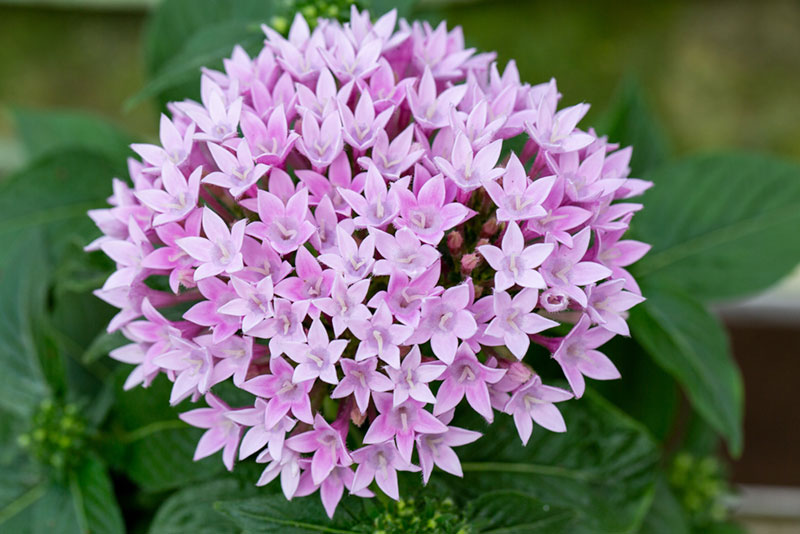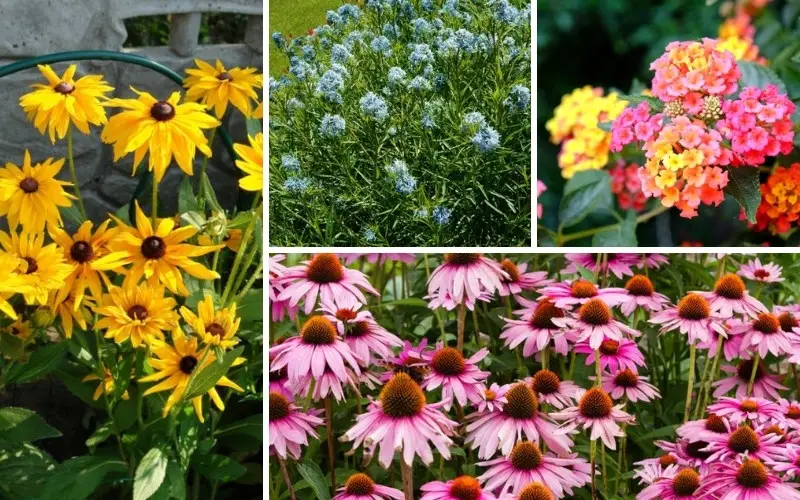
Have you just moved to Georgia? Maybe you’re eager to create a garden that will stand up to drought? Or are you a long-time Georgia resident wondering what you can do to make your outdoor plants more resistant to drought in your state? If so, you’ve come to the right place.
The state of Georgia includes the USDA zones of 6a through 9a. Of course, the northern areas of Georgia are cooler than the southern areas, which can get extremely sultry. No matter the area of Georgia where you reside, you need to know about drought-tolerant plants in case a drought strikes your region.
Let’s explore some Georgia drought tolerant plants;
Arkansas Bluestar (Amsonia hubrectii)
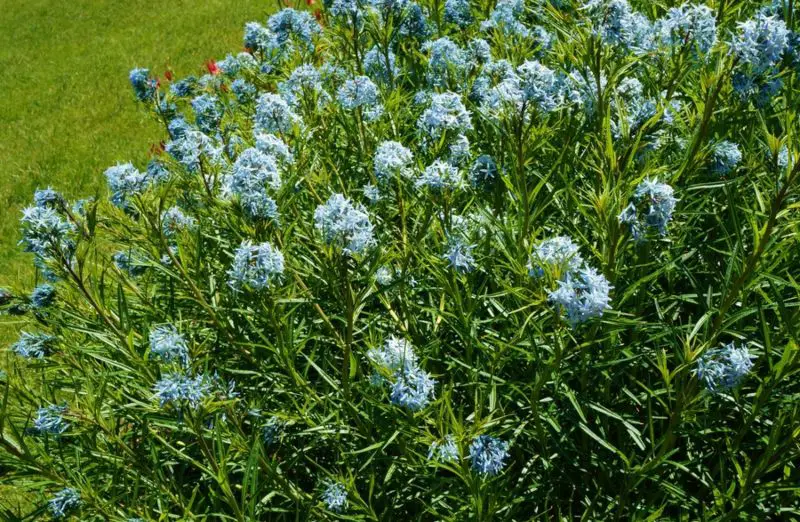
This is a subtly colorful flower that many Georgia homeowners love and include in their gardens. It is colorful in the fall months, which is unique and unexpected.
Once an Arkansa Bluestar plant is fully established, it will be able to stand up to drought. It’s also a low-maintenance plant, so it’s convenient to keep looking beautiful. You will love its blue flowers in the spring, and leaves have a delicate and ethereal look.
If you decide to add Arkansa Bluestar in your garden, position it so it gets partial shade to full sun. The soil should be well-drained.
Yucca

Yucca is another drought-tolerant plant you can include in your Georgia garden. It’s a famously resilient plant that stands up to stressors. While it’s common to see Yucca plants in pots indoors, it grows even more beautifully outside. The Yucca plant does best with bright to medium sunlight, and you should fertilize twice each year with a time-release fertilizer.
There are several different varieties of Yucca available, so choose the best one for you. There are different sizes and shapes available. This plant has unique leaves with a grayish-green color. One of its greatest strengths is to stay beautiful in the face of drought.
Red Velvet (Salvia microphylla)

If you love red and velvet is one of your favorite textures, you’ve got to have this drought-tolerant plant in your Georgia garden. Red Velvet has bright red petals with a luxurious feel to the touch. This plant does best in either partial or full sun, and the soil should be well-drained yet moist.
Remember to regularly fertilize and water your Red Velvet (as well as your other plants) to keep it at its healthiest. If drought comes, however, you can be confident that this plant will stand up well.
Yarrow (Achillea millefolium)

Bring even more color to your Georgia property with yarrow plants. This plant has yellow flowers that cheer and inspire. It’s especially great for creating a carefree and “open meadow” look for your garden.
Not only does yarrow stand up to drought, but it’s also pest-resistant. It’s also great for bringing butterflies to your property. When planting more than one yarrow plant, you should put at least one to two feet of space between each plant. Keep your yarrow well-fertilized by feeding it with compost thinly layered in the spring.
Lantana (Lantana camara)

This is a cheerful plant with lots of bright coloration, and it can resist droughts in Georgia. This is a lovely plant if you want something that looks similar to a vine. Lantana plants add color to the garden, with floral clusters in vibrant shades of blue, purple, pink, red, blue, white, orange, and yellow.
Lantana are so colorful as to be nearly fluorescent, and there are often different colored flowers in one cluster. If you just want one color, you can find that variety in the Lantana species. Lantana does best with partial or full sun. Don’t plant Lantana if you have pets, as these plants are toxic.
Zinnia (Zinnia elegans)
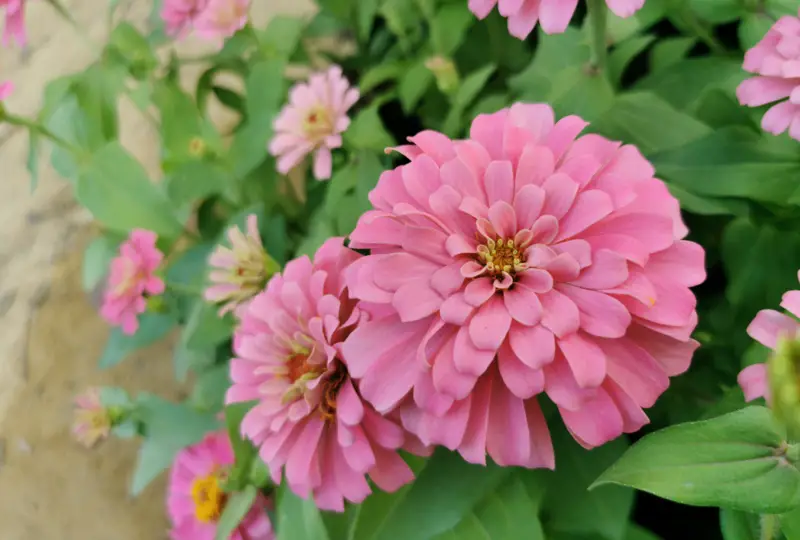
Zinnia is yet another vibrant flowering plant for your Georgia garden that will survive drought. These plants are easy to grow, and they feature heavy blooming. Daisy-lovers will adore zinnias, as they have a similar look. There are single-flowered, double-flowered, and semi-double-flowered zinnia varieties available. Zinnias require full sun, so be aware of this when deciding where to plant them.
Ensure the soil has a pH ranging from 5.5 to 7.5. It should be well-drained and if you want fast flower growth, add compost for more nutrition. Air circulation is especially important for this plant.
Black-Eyed Susan (Rudbeckia hirta)
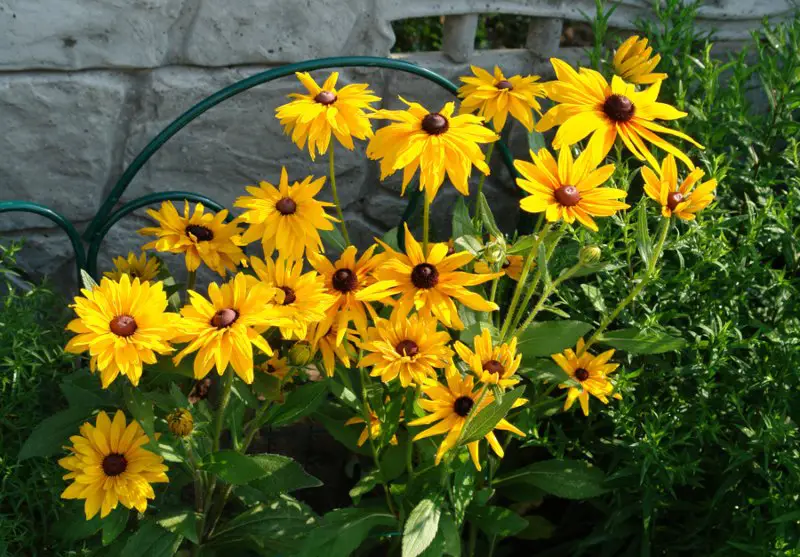
A bit like a smaller version of the famous sunflower, Black-Eyed Susans are a well-known American flower. You should plant these drought-resistant flowers between March and May. You should see flowering between June and September, and germination is quick. In fact, it usually happens between seven and 30 days.
Black-Eyed Susans do best in fertilized soil, and these are sun-loving flowers. They may grow taller than you probably imagine, as high as three feet under some conditions. They should at least grow to one foot once they mature.
Lavender

Everyone loves gorgeous fragrances when relaxing in the garden. That’s exactly what you get when you plant lavender, and it’s a drought-tolerant plant. There are several ways you can use it in your garden, including planting it as a border. This is a perennial plant, and it should stay in your garden over several years as long as you give it the correct conditions. Get a variety of lavender that is appropriate for your Georgia property. There are different types available, so make sure the one you get fits your needs.
Coneflower

Choose a variety of coneflower that is best for your garden and enjoy its drought tolerance. This plant loves the sun, and it’s a hardy flower. Many gardeners enjoy using coneflower in their garden borders and accents. If you want to enhance its beauty, place it with other kinds of meadow perennial. You shouldn’t have to do staking in order to get this plant to stand straight. In fact, it should stand up straight by itself as long as you don’t give it more nutrition or water than it needs.
Agastache

Agastache is a plant in the mint family, and it’s great for adding to your Georgia property. This type of plant attracts pollinators, so be prepared for that. Bees and moths, as well as beautiful butterflies, love this plant. You can use Agastache in your garden border or in whatever way you want. Don’t be afraid to be original. After the Agastache plant blooms and flowers appear, these will stay in place until the frost occurs. Choose an Agastache variety that best fits your lifestyle and needs.
Conclusion
Remember, always consult with a gardening expert if you’re not sure how to care for a specific kind of plant or whether it will do well in your region. The plants we’ve listed here are beautiful additions to Georgia gardens, and they’re known to stand up to and live through drought conditions.









